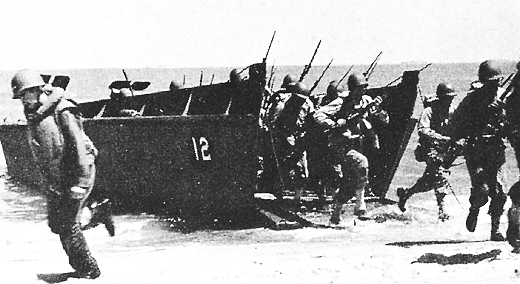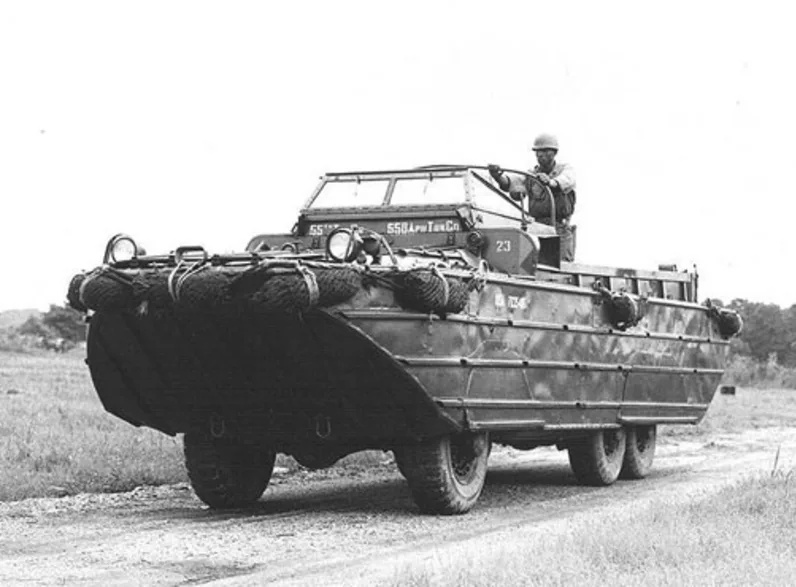“It’ll be like mad King George the Third! I’ll be mad King George the Stammerer!” – Colin Firth; ‘The King’s Speech’ (2010)
Whatever the real King George VI thought about his stammer, Colin Firth was certainly right when he said that George the Sixth wasn’t the only English monarch in history who might have been thought of as ‘mad’ by his people. In fact, the crown for that award was given out over two hundred years ago, to another King George, whom this article is about; King George III.
Who Was George III?
He was born George William Fredrick on the fourth of June, 1738. He ascended to the British throne as King George III upon the death of his grandfather, the late George II, in October of 1760. By all accounts, the new monarch was a perfectly healthy and normal human-being and the first half of his reign ran relatively smoothly with no serious health complications of any kind. For George III, life was going well. He was happily married to his consort, Queen Charlotte; he had several children (fifteen in total!) and the British Empire was on the rise. During his reign, he saw the American and French Revolutions; he saw the wars they created and he saw the great battles that were fought against Napoleon. He was an avid student and was fascinated with science and technology. He gave his personal support to a struggling clock and watchmaker named John Harrison, whose invention, the marine chronometer, would go on to vastly improve accuracy of navigation at sea. He was the third ‘George’ of the Georgian-era which ran from 1714-1830.
George III was furious and devastated at the result of the American Revolutionary War (1775-1783), but eventually came to accept the United States as a new nation, despite his frustrations and disappointments regarding the outcome of the War. But the king’s dismay at the loss of the American Colonies was as nothing to the dismay of his friends, family and politicians when the king began to lose his mind…
The Madness of King George
George III is famous for many things, but he is most famous for the fits of “madness” that plagued his health towards the end of his life. Many kings and even queens, have gone mad over the centuries, but perhaps why George III is remembered so well in the history books, is because he lost his mind at a key point in history, with the fall of the French Monarchy and the rise of Napoleon Bonaparte, and the serious military threat that the new French leader posed to Great Britain. Because of the rumblings in Europe and danger of war with France (again!), George III’s incapacitation and a hopeful cure of this insanity, was of vital importance to the British government and the royal household.
George III’s illness started in October of 1788. Prior to this date everything had been just fine, but eventually, things began to go wrong. The king’s personal physician suspected something was up when “Farmer George” as his subjects affectionately called him, due to the monarch’s love of nature, the outdoors and of the occupation of farming, tried to plant a steak! He believed that meat grew from trees and that by planting a nice T-bone in the garden, he might perhaps grow a new breed of hotdog tree (or something like that). The royal physician thought this rather odd. He didn’t do anything about it, but it certainly made him pay closer attention to the king.
The first real sign of George’s madness happened when his servants happened upon him in the grounds of Windsor Castle…shaking hands with a tree…whom the king believed was the person of King Frederick the Great of the Prussian Empire! Apart from the fact that Frederick the Great never had bark, branches or leaves on his person…there was also the rather inconvenient fact that by 1788…Frederick the Great had been dead for two years! It was now that royal physicians really began to worry!
George III gradually grew worse. He suffered from a variety of complaints ranging from severe stomach-cramps and general abdominal pain, joint-and-muscle pain, anxiety-attacks, depression and hallucinations (which probably explains the royal tree and the steak-planting). He would have great discomfort in sleeping and suffered from seizures and fits that were so bad that his doctors were compelled to strap the king into a chair to prevent him from harming himself or others! As the year 1788 progressed into October and November, the king grew more and more unmanagable and erratic and there were talks of creating a regency if the king was unable to rule effectively.
Treating the King
Medicine in the 18th century was rudimentary at best. While physicians in the 1780s knew how to treat injuries and various illnesses with medicines of mild effectiveness, they had absolutely no understanding of mental afflictions. There was no distinction between one mental condition to another and there was no real way of knowing how to treat mental illness and certainly no way of curing it! George III’s condition was simply labelled “Madness”.
In the truest sense of the word, the king was given the full Georgian medical treatment for “Madness”, a series of procedures that were far from pleasant. It would not be until the mid-1800s that doctors finally threw out the millenia-old theory of ‘Humorism’, that the human body supposedly contained four humors or liquids: Black and Yellow Bile, Phlegm and Blood. In the 1780s however, this medical theory was still in full swing. And it was with this misguided knowledge that the doctors attempted to treat the king.
The usual treatments included such procedures as bloodletting, blistering, sweating, restraints and scary cocktails and potions designed to treat the king’s various symptoms, all to no effect. Something drastic had to be done.
Enter Dr. Francis Willis.
Francis Willis was a qualified physician for the day and he was recommended as the best person in all England to treat the ailing king. A friend of Queen Charlotte mentioned that Dr. Willis had successfully cured her mother and that his methods appeared effective and creditable. Desperate to try anything, the royal physicians backed down and gave Willis free access to the king.
Willis’s treatments were both familiar and unfamiliar to the doctors of the day. He employed many of the usual methods of dealing with mental illness that other 18th Century doctors were familiar with, such as restraints and blistering, but instead of acting blindly, Willis also tried to counsel and provide therapy for his unfortunate patients. Due to the sheer hopelessness of it, perhaps, most physicians probably failed to remember that their patients were human and didn’t bother trying to communicate with people suffering from mental illnesses. Willis spent time with the king, talking him through things, trying to understand what was going on.
It was clear to Willis at least, that if the king was mad and out of control, then it was someone’s duty to bring the king back UNDER control…by force if need be. And if the royal physicians weren’t willing to do it due to their patient’s status and title, then he would. Apart from regimens of therapy, restraints, control, exercise and plenty of exposure to fresh air and regular labour, Willis also tried to make it clear to his patients that they themselves had to make an effort to fight against their demons.
Meanwhile, all the other doctors just laughed. They thought that Willis himself was probably only just slightly less mad than his patient and that his treatments couldn’t possibly work and that he was wasting his time and that he should go and do something else!…Despite the fact that Willis had significant success in treating mental illness…something that none of the royal physicians could claim…and despite the fact that Dr. Willis’s treatments did produce results. As indeed they did with the king.
By 1789, the king’s madness had subsided. The regency had not been declared and he was now able to resume his normal royal duties, aided back to health by the determined and persistent Dr. Willis who would never give up. Willis’s ability to cure the king made him a national celebrity and he made a name for himself as a pioneer of mental health treatment. For a while…things seemed alright.
But for George III, his madness was not over. Between 1789-1810, he would have another five episodes of “madness”. Unfortunately, Francis Willis died in 1807 at the respectable and ripe age of 89, but he was succeeded in his work by his two sons, Drs. John and Robert Willis. Familiar with their father’s methods, these brother physicians continued to monitor the king and treat him for his occasional reccurences of insanity for the next twenty years. As much as he probably appreciated their efforts, it’s not surprising that the king grew to hate the sight of Dr. Willis and the sight of his sons. He refused their treatments despite their effectiveness and he barred them from his presence. Despite this resistence, Queen Charlotte was insistent that the doctors ignore her husband’s ravings and to continue treating him since it was clear to her that only constant monitoring and treatment would drive away his madness, and this persistence did seem to work. Although George III was not free of his madness, with help, he was at least able to control it and it seemed that life could go on as normal.
Or so they thought.
In 1810, the king’s madness returned, and this time, it came back with a vengeance. Not even the determination and experience of the Willis brothers could save him, and George III was eventually deposed as king a year later. Wholly unable to rule despite the best efforts of the Willises and other doctors, George III was declared incurably insane and finally, in 1811, a regency was declared, with his son, the future King George IV, taking the reins of monarchy and government.
The End of George III
George’s final descent into complete madness destroyed his family. In 1811, his first son was declared Prince Regent. George’s devoted and loving wife, Queen Charlotte, was devastated by the news of her husband’s return to insanity and despite the fact that they did no good at all, she would visit her husband regularly in the room that he would eventually be taken to, in Windsor Castle. Again, George’s insanity came in waves, but try as they might, it was impossible to pull him out. He was in too deep by now. As the years went on, he eventually went blind and was lost to the world. He wasn’t even informed of his wife’s death in 1818. In the end, George III would die alone and insane at the age of 81, in 1820.
Diagnosing the King
It is widely believed the George III suffered from recurrent and eventually, permanent porphyria. In layman’s terms, porphyria is a genetic nervous disease that effects the brain and nervous system. Sufferers of Porphyria experience a range of discomforts, ranging from vomiting to stomach-pains, sensitive skin, diahrrea, purple or red urine, seizures and muscle-weakness. The most famous symptoms of porphyria, however, are severe mental disturbances. Sufferers of severe porphyria are afflicted with depression, paranoia, panic-attacks and hallucinations. It is possible that the king’s porphyria was worsened by the ingestion of arsenic, a strong poison that was a common ingredient in cosmetics and even some medicines of the 1700s.






